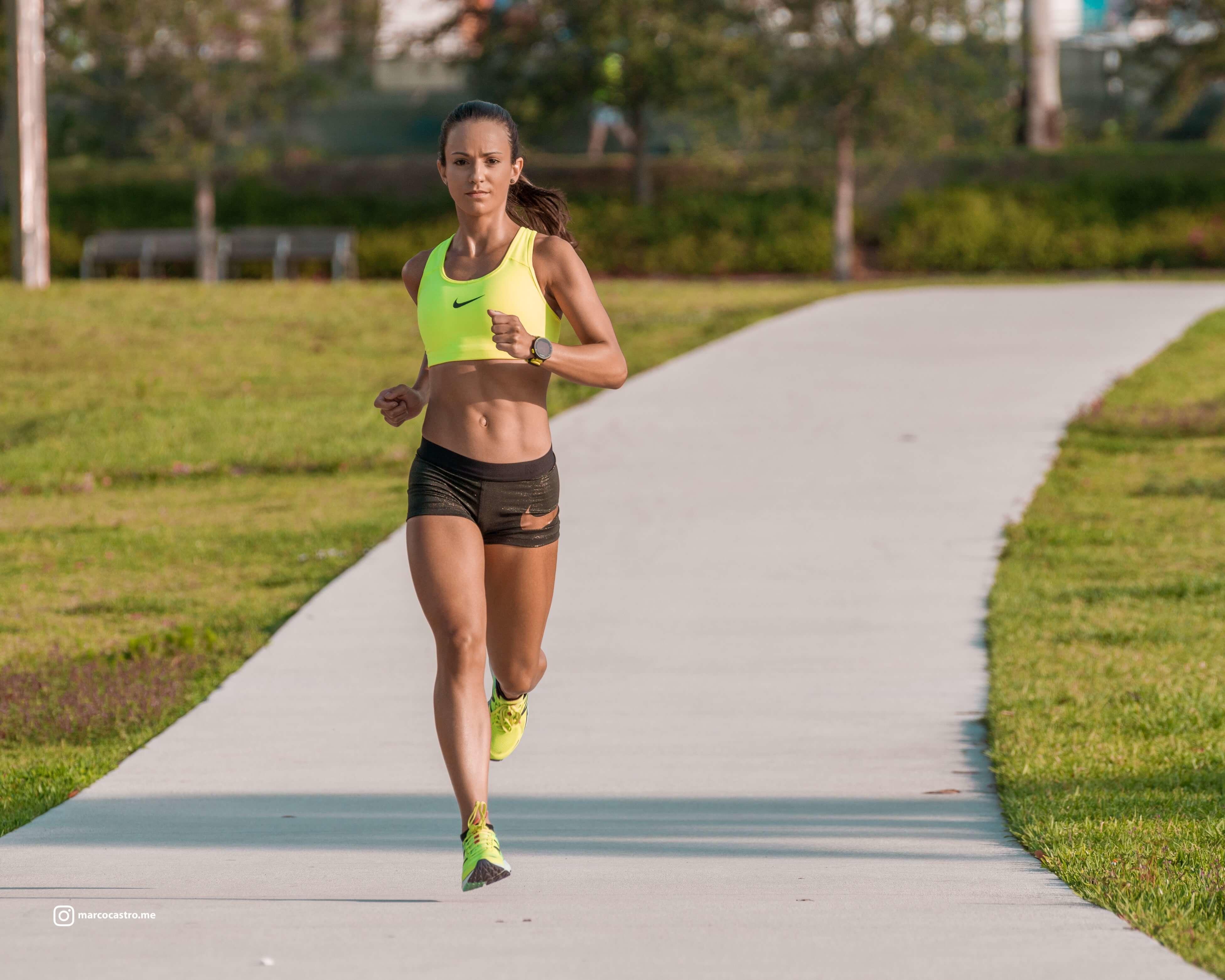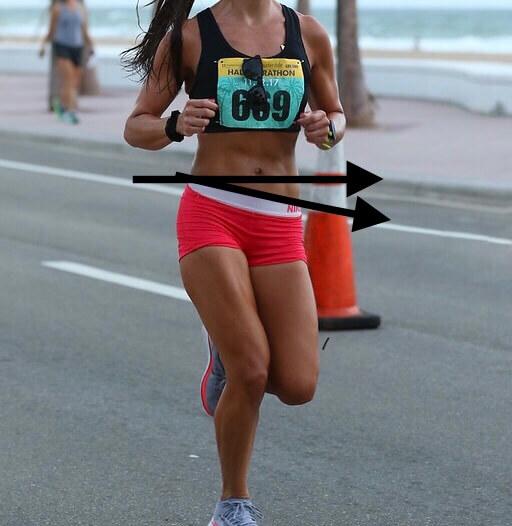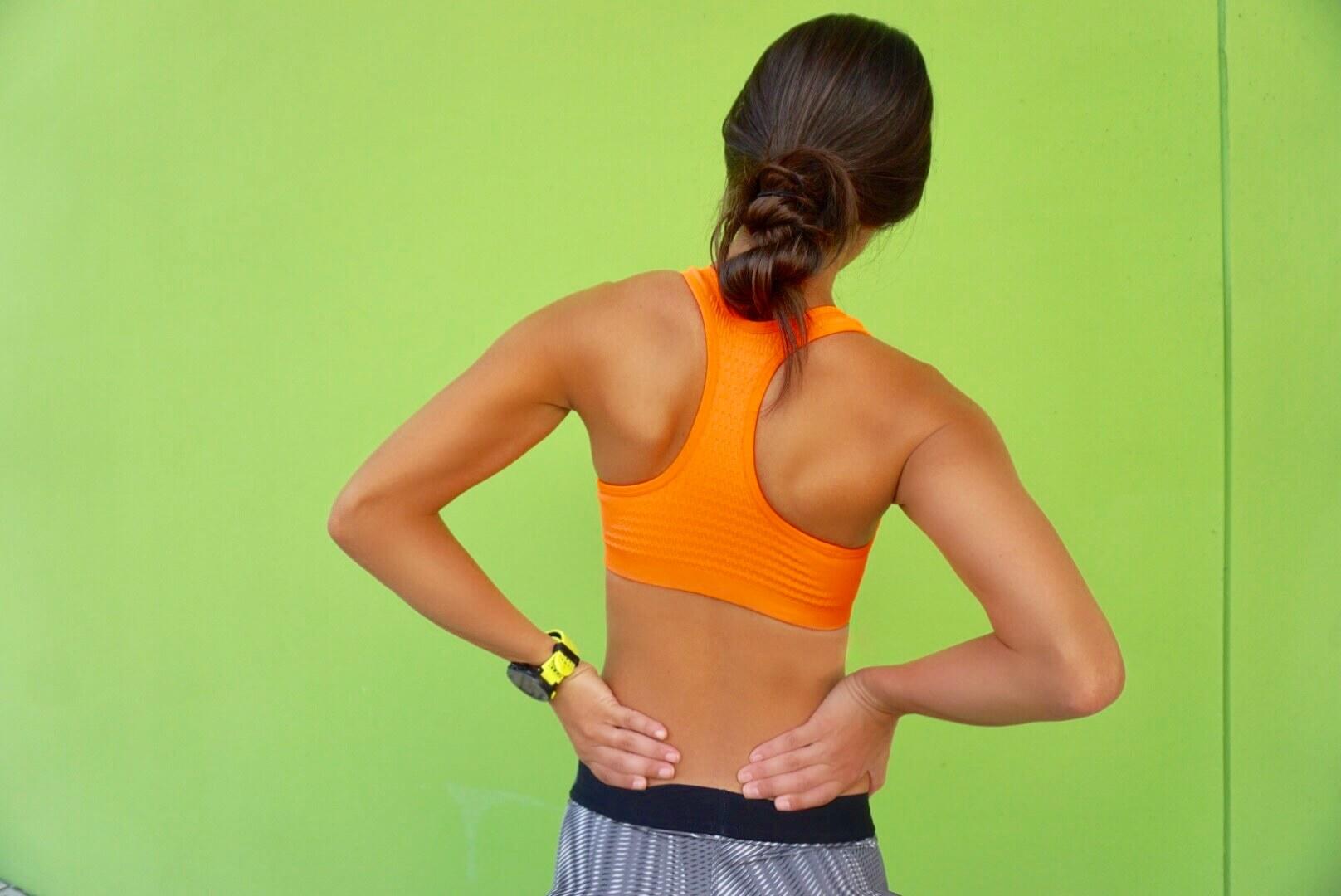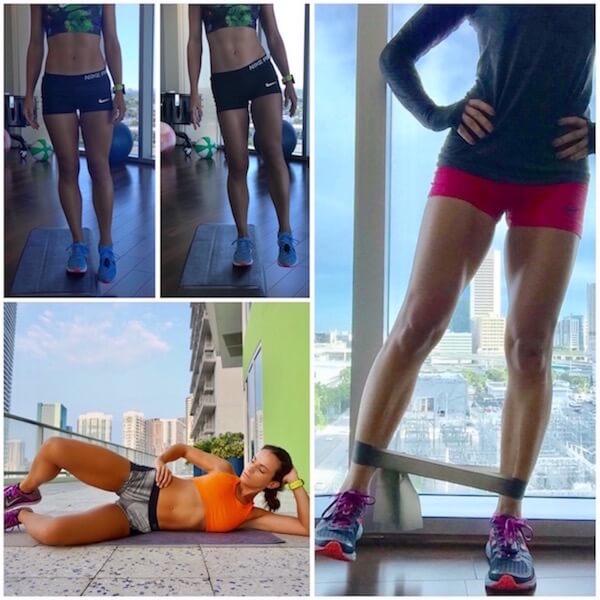The Problem with the Hip Drop and How to Fix It

Running form has been studied over the years to understand what posture, stride, cadence, and other mechanics are ideal in order to improve performance and avoid injury. The most recent focus has been on foot strike patterns, but the data is inconclusive whether forefoot or mid-foot striking is more beneficial than heel striking. Many runners have tried to adopt the pattern of forefoot striking while running—some with minimal positive outcomes and others with no change in performance or injury occurrence. With the lacking conclusions on the effect of foot strike patterns, it is time to look closer at the mechanics of the higher joints of the lower body.
Weakness and poor range of motion in any joints of the body can greatly affect how our bodies react to running. Most people blame knee and other body pains on the constant impact of the running motion, but this may not really be the case. Yes, running may be considered a high impact sport giving it a higher risk of injury, but with the proper form and strength, it can be a safe exercise option for the joints. If the regular recreational runner who runs 30 miles per week to train for a marathon develops knee problems and it was solely due to the fact that they were running, then an elite runner who trains over 100 miles per week would have knees in much worse shape than the recreational runner. The reason this isn’t so is because most elite and professional runners have running coaches, physical therapists, and other sports specialists constantly monitoring their form and mechanical issues to assist in relieving the stress of the impact of running so many miles.

It’s All in the Hips
The role of hip strength is known to be one of the most important for proper running. The entire body is basically a chain—mobility in one joint leads to the mobility in the connecting joint and so fourth. As the research on the ankle and foot joint has revealed the connection of foot strike and injury, the rest of the body has similar connections to injury. The pounding of each foot strike definitely may have an impact on the knee joint, but the impact may be minimized with proper strength in surrounding joints. This also goes for the joints of the hip and pelvis, as well as the spine. Every muscle involved in the running cycle is important to keep strong in order to avoid the development of pain or injury from overuse or sudden changes in terrain or pace.

One specific form imbalance seen in many runners is the hip drop. Basically when the planted leg has weakness in the outer hip muscles, the opposite hip drops below parallel while the leg is in the air. These outer hip muscles are usually the hip abductors and external rotators, which in the open chain (foot not planted), they lift the leg away from the other and turn the knee to face outwards, respectively. If the hip abductors are weak the legs would constantly be too close together throughout the running cycle. Weakness in the hip external rotators will cause the knees to buckle inwards. The hip drop is the easiest way to evaluate this weakness.
Save Your Knees and Back
Maintaining a hip drop will lead to mechanical problems and muscle strain over time and most definitely increase injury risk. Without the strength of these hip muscles, other muscles in the body, usually in the spine and lower leg, will overcompensate to maintain pace and leg height while running. This mechanism is a main cause of knee dysfunction in runners. Constantly buckling the knee inwards during the stance phase of running will increase the work of the quadriceps muscle to stabilize the knee and absorb the forces of the impact. Overtime this creates an imbalance in the knee joint and eventually leads to pain and possibly other problems such as sprains and tears.
Just as the continued hip drop affects joints below the hip, it can most definitely affect joints above as well. The lower back takes a toll with this poor form due to the misalignment created by the hip drop. One side of the trunk is shortened, which leaves muscles in a tightened position, while the other side is lengthened and in a more relaxed state. The relaxed side of the body will eventually stay weaker than the shortened side, and cause strain in the spine muscles working to compensate for the imbalance.

As mentioned, the easiest way to spot hip weakness is to evaluate the amount of hip drop during the running cycle, either by having a friend watch you run from directly in front or behind, running on a treadmill facing a mirror where the hips can be visible, or locate a running specialist that video records your running form. If you notice a hip drop, it is important to correct it immediately to avoid any future mechanical issues. If you already are experiencing knee or back pain, correcting the hip drop may solve the issue.
Correction & Prevention
Hip strengthening should be a priority for runners, since weakness in these muscle groups are many times the cause of knee, lower leg or back problems. The basic moves such as squats, lunges and step-ups are great for overall leg strength, but it is important to incorporate exercises that isolate the hip abductors and external rotators. Simple floor exercises, such as clamshells and leg raises, are the most efficient options since they require minimal to no equipment and can be done at home. Clamshells (shown below) isolate the external rotators and can be performed using a resistance band around the knees to increase the challenge. Side-lying leg lifts will target the hip abductors. This exercise can also be done in the standing position with a resistance band around the ankles, as shown in the image. Performing hip hikes, which is the opposite of the hip drop, is an excellent exercise that mimics the actual hip motion during the stance phase of running.

Whether you are experiencing pain, recovering from an injury, or interested in improving your running form to avoid any mechanical issues, correcting an existing hip drop is essential. Most injuries and overuse pains from running are caused by muscle imbalances and weakness, that unfortunately, are not addressed until the pain and injuries arise. Runners tend to skip time at the gym and strengthening sessions all together, but it should always be a part of the training plan. All it takes is 30 minutes, three times per week, to reap the benefits. Not only will a stronger and more balanced body reduce injury risk, it will also help correct running mechanics. Improved running mechanics will in turn yield more efficient running and faster paces.
Sources
- , The Influence of Abnormal Hip Mechanics on Knee Injury: A Biomechanical Perspective, Journal
- , Frontal Plane Pelvic Drop in Runners: Causes and Clinical Implications, Journal
- , The Effect of Weak Hip Abductors or External Rotators on Knee Valgus Kinematics in Healthy Subjects: A Systematic Review, Journal
- , Hip Abductor Strength and Lower Extremity Running Related Injury in Distance Runners: A Systematic Review, Journal
Latest Articles
 Is Running on a Treadmill Easier Than Running Outside?Runners have their own preferences, whether it is treadmill running, running outside on the road, or exploring trails. So...
Is Running on a Treadmill Easier Than Running Outside?Runners have their own preferences, whether it is treadmill running, running outside on the road, or exploring trails. So... Is It OK to Use Trail Running Shoes on the Road?While trail running shoes can be used on roads, especially in situations where a runner encounters mixed terrains or pref...
Is It OK to Use Trail Running Shoes on the Road?While trail running shoes can be used on roads, especially in situations where a runner encounters mixed terrains or pref... How to Fix Sore Quads After Running?Rest, ice, gentle stretching, and over-the-counter pain relievers can help soothe sore quads after running. Also, ensure ...
How to Fix Sore Quads After Running?Rest, ice, gentle stretching, and over-the-counter pain relievers can help soothe sore quads after running. Also, ensure ... 10 Fruits With The Most Electrolytes to Replace Sports DrinksThese fruits are high in electrolytes such as potassium, magnesium, and calcium, essential for hydration, muscle function...
10 Fruits With The Most Electrolytes to Replace Sports DrinksThese fruits are high in electrolytes such as potassium, magnesium, and calcium, essential for hydration, muscle function...

